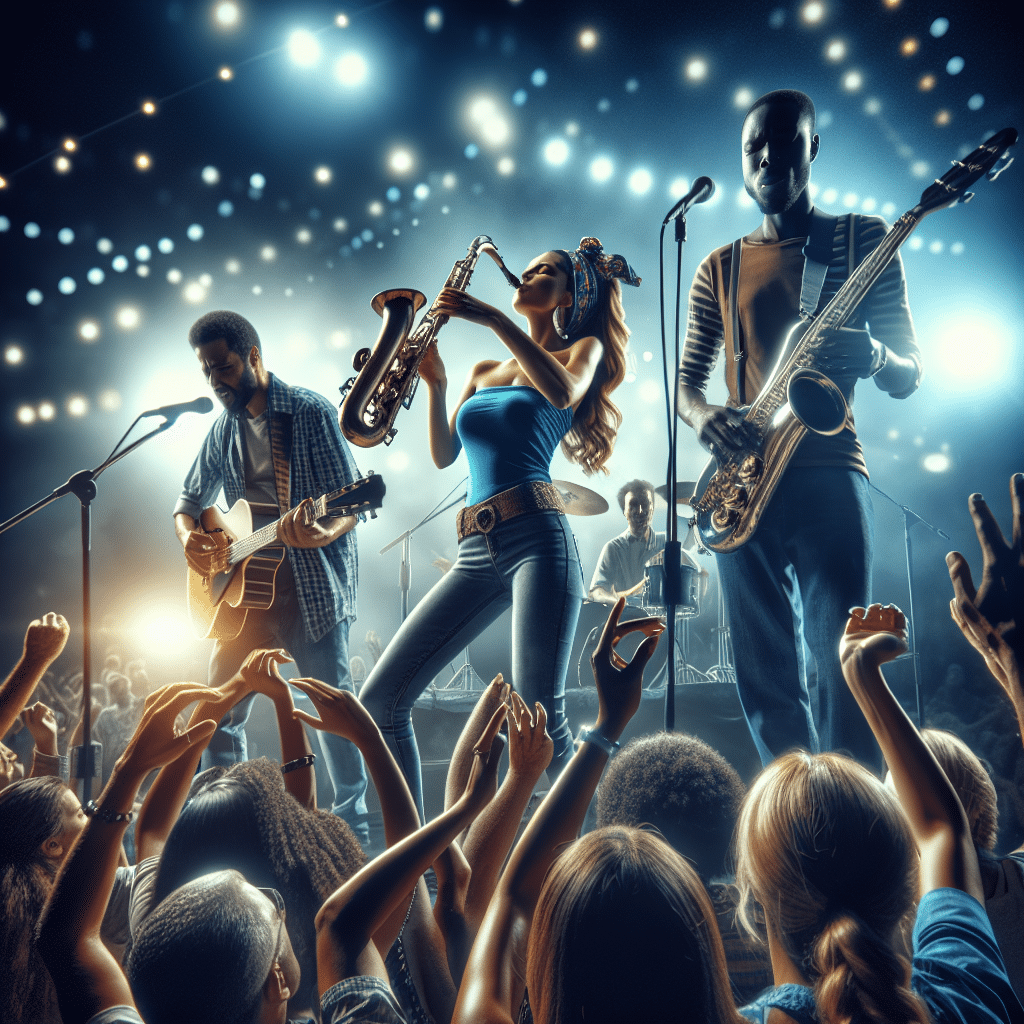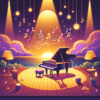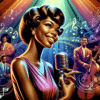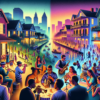Rhythm and Blues: Exploring the Heartbeat of Jazz Festivals Worldwide

Rhythm and Blues (R&B) is more than just a genre of music; it is a cultural phenomenon that has profoundly influenced the fabric of global music. Originating in the 1940s and evolving through the decades, R&B has woven its way into jazz, rock, soul, and beyond. This article explores the significance of rhythm and blues, especially in the context of jazz festivals around the world, where it serves as a gateway for many to experience live music's vibrancy.
The Roots of Rhythm and Blues
Rhythm and Blues traces its origins back to African American musical traditions, incorporating elements of jazz, gospel, and blues. The genre emerged during a time when America was facing social upheaval, and through its emotive melodies and lyrical depth, it offered solace and a voice to the struggles of the community. Early artists like Ray Charles and Ruth Brown paved the way for subsequent generations, merging traditional sounds with modern influences.
The combination of a strong backbeat, melodic hooks, and expressive lyrics made R&B an instant hit. Its ability to narrate personal and collective experiences contributed to its growth. With each decade, R&B has adapted, embracing new influences and technologies, making it a living testament to cultural resilience.
R&B's Vital Role in Jazz Festivals
Jazz festivals around the globe often include R&B performances, reflecting its significant contribution to the genre and its ability to attract diverse audiences. Jazz and R&B share common ground, making their integration in festivals seamless. The improvisational nature of jazz complements the emotive renderings of R&B, leading to unforgettable live performances that resonate with audiences of various backgrounds.
See Also: Melodic Escapes: Top Smooth Jazz Tracks to Relax and Rejuvenate
Melodic Escapes: Top Smooth Jazz Tracks to Relax and RejuvenateThe Appeal of R&B at Jazz Festivals
Diverse Audience: Including R&B acts at jazz festivals attracts a wider range of music lovers, bridging generational gaps. Younger crowds are often drawn to contemporary R&B artists while older generations appreciate the classic sounds that shaped the genre.
Cultural Fusion: The blend of jazz and R&B showcases music's universality. Artists often collaborate during live shows, fostering creativity and innovation. This fusion leads to unique performances that highlight the artistry's potential and reach.
- Celebrating Legends: Festivals often pay homage to legendary R&B figures, creating a sense of community and nostalgia. Tribute performances honor the contributions of artists like Aretha Franklin and Marvin Gaye, reminding audiences of the genre's rich history.
Major Jazz Festivals Featuring R&B
Several prominent jazz festivals worldwide exemplify the integration of R&B into their programming:
See Also: Ella Fitzgerald: The First Lady of Song and Her Unforgettable Influence on Jazz
Ella Fitzgerald: The First Lady of Song and Her Unforgettable Influence on JazzMontreux Jazz Festival (Switzerland): Known as one of the largest jazz festivals globally, Montreux features a diverse lineup that includes iconic R&B artists alongside jazz legends. Its picturesque setting on Lake Geneva provides a stunning backdrop for unforgettable performances.
Newport Jazz Festival (USA): This historic festival is a pillar of the jazz community, consistently welcoming R&B artists. The mid-century event, initially celebrated for jazz, has evolved to embrace R&B, showcasing various styles through a weekend of musical exploration.
North Sea Jazz Festival (Netherlands): With a reputation for its eclectic musical palette, the North Sea Jazz Festival incorporates R&B into its diverse line-up. The festival is a melting pot of culture, art, and music, drawing fans from all over the world.
Cape Town International Jazz Festival (South Africa): As Africa’s grandest jazz festival, it includes many local and international R&B artists who infuse their performances with South African influences, demonstrating the genre's adaptability and global appeal.
- Montréal International Jazz Festival (Canada): This festival is renowned for its vast array of performers and genres, featuring R&B icons alongside emerging talents. The festival is a celebration of music, bringing together diverse audiences in a spirit of unity.
The Modern Evolution of R&B
Contemporary R&B artists like H.E.R., Anderson .Paak, and Lizzo have managed to keep the genre alive while visually and sonically pushing boundaries. Their music reflects modern themes while honoring the roots of R&B. Their performances often blend traditional R&B sounds with jazz influences, creating an innovative landscape that continues to attract festival-goers.
Moreover, live performances have become an essential avenue for experiencing R&B's emotional depth firsthand. The improvisation and dynamic exchanges between performers create an electrifying atmosphere that can only be captured in person, emphasizing the communal experience of music.
Conclusion: The Importance of Rhythm and Blues
Rhythm and Blues plays an indispensable role in jazz festivals worldwide, acting as a bridge between various musical styles and cultures. Its storied history and evolving nature reflect the socio-political and emotional landscapes of society. As audiences immerse themselves in R&B-infused performances, they encounter not only the sound but also the heart and soul of a genre that remains relevant.
The heartbeat of jazz festivals is undoubtedly amplified by R&B, as it continues to celebrate diversity, cultural exchange, and musical innovation. As we look forward to future festivals, we can anticipate the enchanting fusion of R&B with jazz, ensuring that music remains a source of joy, connection, and collective experience across boundaries.
See Also: From New Orleans to Montreux: The Unforgettable Experiences of Jazz Festivals
From New Orleans to Montreux: The Unforgettable Experiences of Jazz FestivalsFAQs
Q: What sparked the origin of Rhythm and Blues?
A: Rhythm and Blues originated in the late 1940s, emerging from African American musical traditions like jazz, gospel, and blues during a time of social change.
Q: What role does R&B play at jazz festivals?
A: R&B attracts a diverse audience, facilitates cultural fusion, and celebrates the legacy of legendary artists, making it integral to the programming of jazz festivals.
Q: Are there notable R&B festivals?
A: While jazz festivals often feature R&B acts, there are festivals specifically focused on R&B music, celebrating its distinct heritage and contemporary artists.
Q: How has R&B evolved in recent years?
A: Contemporary R&B embraces modern themes and blends various musical influences, ensuring the genre remains dynamic and relevant in today’s musical landscape.
 Infusion of Emotion: How New R&B Artists Are Redefining the Genre
Infusion of Emotion: How New R&B Artists Are Redefining the GenreQ: Can I experience R&B performances at jazz festivals?
A: Yes, numerous jazz festivals around the world include R&B performances, allowing attendees to enjoy the seamless fusion of these genres live.
If you want to know other articles similar to Rhythm and Blues: Exploring the Heartbeat of Jazz Festivals Worldwide you can visit the category Jazz.
